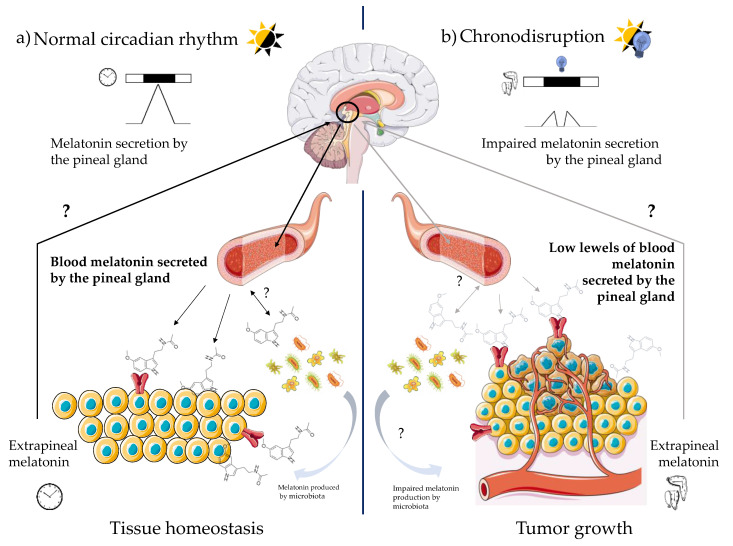Figure 5.
Possible interplay between pineal and extrapineal melatonin (chemical formula in grey) in chronodisruption. (a) Situation under normal circadian rhythm. The pineal gland secretes melatonin with a peak during the dark phase, reaching concentrations of 0.5–1 nM in plasma. Its actions may occur in an MT receptor-dependent manner or by diffusion through the plasma membrane. In addition, extrapineal melatonin seems to be in antiphase with melatonin from the pineal gland (concentrations not yet fully stablished). Plasma melatonin may participate in the regulation of extrapineal melatonin production (e.g., melatonin produced by the microbiota or different tissues) and, in turn, extrapineal melatonin may exert some regulation on the pineal melatonin secretion, thus closing a possible feedback-loop. (b) Under chronodisruption or ALAN exposure, melatonin secretion is impaired, probably with its total concentration reduced in plasma. When this situation is continued over time, it could affect the production of extrapineal melatonin, driving decreased or mistimed melatonin levels and therefore leading to peripheral clock mismatch and reducing the ability to control tumor growth. Another possibility that remains to be explored is whether the crosstalk between extrapineal and pineal melatonin is affected by chronodisruption, driving a malfunction of the feedback loop and contributing to the further promotion of the tumor. This figure was built with SMART resources (Servier Medical Art), licensed under a Creative Common Attribution 3.0 Generic License. See http://smart.servier.com/.

